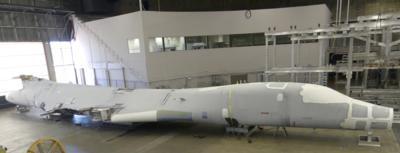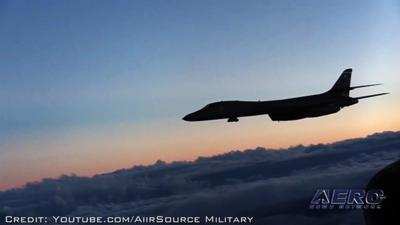Wed, Mar 16, 2022
Institute for Aviation Research to Create Computer Renderings of Parts, Structures
The Air Force has awarded $100 million to the Wichita State University’s National Institute for Aviation Research (NIAR) to continue its work on digitizing the prodigious amount of information needed to create virtual renders of the B-1 bomber's structures.

The goal of the Digital Engineering program is to develop a computerized rendition for a variety of structures, parts, and systems for the B-1 platform, freeing them from the constraints of referencing aging assortments of now-vintage blueprints. The program will allow Air Force personnel to "proactively develop repairs, reduce the cost and schedule for parts procurement by eliminating the burden of interpreting legacy USAF drawings, and increase the number of vendors who are capable of producing parts for the B-1 platform," says Joseph Lay, B-1 SPO material leader for structures. "Digital Engineering will not only help reduce the time it takes to develop repairs but also to install them. We will be able to develop and test repairs well in advance virtually ensuring first time success and improving aircraft availability.”

The long service life of the B-1 has created an unusual set of problems, being born in a different era and designed with older, increasingly outmoded methodology. The platform is still quite potent, however, being used through nearly every air force operation in the last 2 decades to the point that it required an extension to its certified test life to keep it in the air. NIAR's assistance in digitizing the design has already yielded some models of support fixtures and some parts, which have entered use with third-party vendors and Depot Maintenance facilities. Eventually, the full package of data will be used to allow for digital analysis, testing, and evaluation following the design of new replacement parts for the B-1. The first complete piece that NIAR completed was a structural model of a single B-1 wing, which quickly served as a proof of concept that allowed expansion into the entire airframe.
“We are excited to continue this partnership and move the B-1 further into the virtual world. We could not have achieved this without the great partnership and team between the SPO, NIAR, and NCMS to make this all happen,” said Lay.
More News
He Attempted To Restart The Engine Three Times. On The Third Restart Attempt, He Noticed That Flames Were Coming Out From The Right Wing Near The Fuel Cap Analysis: The pilot repor>[...]
Make Sure You NEVER Miss A New Story From Aero-News Network Do you ever feel like you never see posts from a certain person or page on Facebook or Instagram? Here’s how you c>[...]
From 2009 (YouTube Edition): Leading Air Show Performers Give Their Best Advice for Newcomers On December 6th through December 9th, the Paris Las Vegas Hotel hosted over 1,500 air >[...]
Aero Linx: NASA ASRS ASRS captures confidential reports, analyzes the resulting aviation safety data, and disseminates vital information to the aviation community. The ASRS is an i>[...]
“For our inaugural Pylon Racing Seminar in Roswell, we were thrilled to certify 60 pilots across our six closed-course pylon race classes. Not only did this year’s PRS >[...]
 NTSB Final Report: Rutan Long-EZ
NTSB Final Report: Rutan Long-EZ ANN FAQ: Turn On Post Notifications
ANN FAQ: Turn On Post Notifications Classic Aero-TV: ICAS Perspectives - Advice for New Air Show Performers
Classic Aero-TV: ICAS Perspectives - Advice for New Air Show Performers ANN's Daily Aero-Linx (06.28.25)
ANN's Daily Aero-Linx (06.28.25) Aero-News: Quote of the Day (06.28.25)
Aero-News: Quote of the Day (06.28.25)




